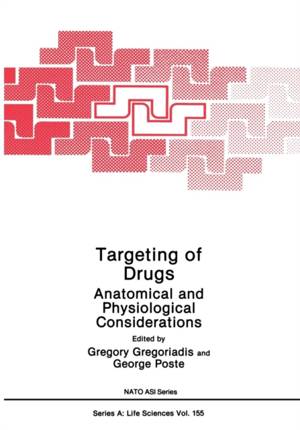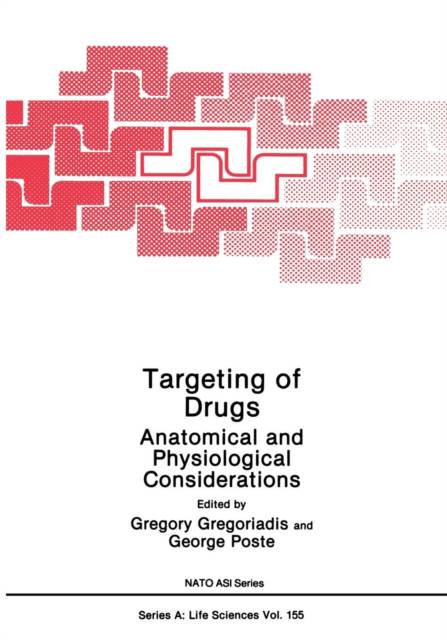
- Afhalen na 1 uur in een winkel met voorraad
- Gratis thuislevering in België vanaf € 30
- Ruim aanbod met 7 miljoen producten
- Afhalen na 1 uur in een winkel met voorraad
- Gratis thuislevering in België vanaf € 30
- Ruim aanbod met 7 miljoen producten
Zoeken
Targeting of Drugs
Anatomical and Physiological Considerations
€ 106,95
+ 213 punten
Omschrijving
A major vehicle for the transition of carrier-mediated drug delivery from a theoretical/experimental status to one with practical uses has been the NATO Advanced Studies Institute series "Targeting of Drugs". Three previous ASls of the series[1-3], also held in Cape Sounion, dealt with carriers of natural and synthetic origin, their preparation and drug incorporation as well as a wide range of applications. This book contains the proceedings of the 4th NATO ASI "Targeting of Drugs: Anatomical and Physiological Considerations" held in Cape Sounion, Greece during 20 June - 1 July 1987. Historically, carrier systems have been chosen on the basis of selective affinity for target sites. For instance, monoclonal antibodies bind selectively to antigens on the surface of cells and the same applies to ligands such as certain glycoproteins which bind to cell receptors. Colloidal carriers on the other hand, are "passively" targeted to the reticuloendothelial system. However, effective drug delivery depends not only on demonstration of affinity of the carrier system for its target but also, and perhaps crucially, on the way(s) by which the carrier-drug entity interacts with the interposed biological milieu. The book deals in depth with a number of biological milieus as travelled space for carriers en route to their destination, difficulties arising from unfavorable milieu-carrier interactions and ways to circumvent such difficulties. It also identifies, when possible, situations where proposed uses would or would not be realistic and provides perspectives for future goals.
Specificaties
Betrokkenen
- Uitgeverij:
Inhoud
- Aantal bladzijden:
- 222
- Taal:
- Engels
- Reeks:
- Reeksnummer:
- nr. 155
Eigenschappen
- Productcode (EAN):
- 9781468455762
- Verschijningsdatum:
- 13/03/2012
- Uitvoering:
- Paperback
- Formaat:
- Trade paperback (VS)
- Afmetingen:
- 178 mm x 254 mm
- Gewicht:
- 417 g

Alleen bij Standaard Boekhandel
+ 213 punten op je klantenkaart van Standaard Boekhandel
Beoordelingen
We publiceren alleen reviews die voldoen aan de voorwaarden voor reviews. Bekijk onze voorwaarden voor reviews.







